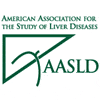 A 12-week regimen of Janssen’s simeprevir and Gilead Sciences’ sofosbuvir boasts high cure rates among those with genotype 1 of the virus, the most common in the United States and the most difficult to treat, aidsmap reports. Ira Jacobson, MD, of Weill Cornell Medical College, presented findings from the open-label Phase IIb COSMOS trial of the drugs at the 64th Annual Meeting of the American Association for the Study of Liver Diseases (AASLD) in Washington, DC.
A 12-week regimen of Janssen’s simeprevir and Gilead Sciences’ sofosbuvir boasts high cure rates among those with genotype 1 of the virus, the most common in the United States and the most difficult to treat, aidsmap reports. Ira Jacobson, MD, of Weill Cornell Medical College, presented findings from the open-label Phase IIb COSMOS trial of the drugs at the 64th Annual Meeting of the American Association for the Study of Liver Diseases (AASLD) in Washington, DC.
Each of the two drugs is weeks from a likely approval from the U.S. Food and Drug Administration. And while the FDA will not be approving simeprevir and sofosbuvir for use in combination at this time, the findings of the COSMOS study may influence clinicians’ decisions to prescribe them together off-label, in particular for patients with more urgent needs for treatment.
The trial had two groups of participants, all of whom had genotype 1 of hep C. The first included 80 people who were null-responders to previous interferon-based treatment who had absent-to-moderate fibrosis. The second group included 87 either treatment-naive or prior null-responder participants who had advanced fibrosis or compensated cirrhosis. All the participants were randomly assigned to receive either once-a-day treatment of the protease inhibitor simeprevir and the nucleotide polymerase inhibitor sofosbuvir or the same regimen plus ribavirin twice a day. The group was further randomized to receive treatment for either 12 or 24 weeks.
Among those in the first group who were treated for 12 weeks, 93 percent of the participants taking dual therapy achieved a sustained virologic response 12 weeks after completing treatment (SVR12, considered a cure), compared with 96 percent taking the triple regimen. Among those in group 1 who received 24 weeks of treatment, a respective 93 and 79 percent achieved an SVR.
In group 2, all of the seven treatment-naive and the seven null-responder participants on the dual regimen who also had adequate follow-up reached an SVR four weeks after completing treatment (group 2 started treatment after group 1, so there is less follow-up data). Among those on the triple regimen, 100 percent of treatment-naive participants and 93 percent of the null responders achieved an SVR4.
The most common side effects included fatigue, headache, nausea and insomnia. There was little difference between the dual- and triple-treatment groups in the incidence of these side effects, with the exception of anemia and increased bilirubin (which can cause jaundice) among those taking ribavirin.
To read the aidsmap story, click here.
Advertisement
Advertisement
Advertisement






13 Comments
13 Comments